I am thrilled to introduce a man I have been following on socials for a while and thankfully my boy, Adam Ketch, set us up. Learn about what has stuck after nearly 30 years in radio, what plugins Derek is using (of course), and how all of this works being legally blind. Enter Derek.
Andreas Sannemann: Can you give me a bit of background on yourself, your career, achievements, and roles at different stations? I am sure a lot of the readers will know you, or of you, but it puts a lot of the below in context I assume.
Derek Welsman: I’m in my 30th year in broadcasting and this is my career path so far:
1990 – 2002: Started in Barrie, ON as an announcer and producer.
2002 – 2007: Commercial Producer Corus Radio Toronto.
2007 – 2010: Imaging Producer Astral Media (MIX 99.9, Newstalk 1010)
2010 – 2013: Morning Show Producer / Imaging Producer “The Dean Blundell Show”, Corus Radio Toronto.
2014 – Present: Imaging Producer Stingray Radio Toronto (boom 97.3, The Breeze Vancouver/Edmonton/Halifax).
I have had the pleasure of working with some of the greats in our industry and have been recognized for my contributions to the industry in the form of Crystals and Ontario Association of Broadcasters (OAB) Awards. Apart from that, I am legally blind.
AS: What’s it like working for some of the biggest radio brands in the country? How do the tasks differ between the different stations/brands? What are the stylistic approaches and how difficult is it to change hats?
DW: When I first started with Stingray (which was Newcap) I was imaging boom and FLOW. It was a huge shift in gears to go back and forth between hip hop/CHR to Classic Gold. I enjoyed the challenge at the time, but I was happy to pass the FLOW torch. The style of imaging I do for boom is more about the message. boom’s brand often centers around humour and general lightheartedness, whereas FLOW’s hip hop brand takes itself VERY seriously. I tend to not take myself very seriously, so I tend to gravitate to that lighter style.
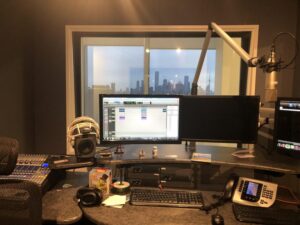 AS: What do your days look like? Is there a blueprint? A routine?
AS: What do your days look like? Is there a blueprint? A routine?
DW: I have a number of predictable daily tasks I perform, but very often I am like a firefighter. The day starts off calm and seemingly predictable and then BAM! A last minute contest is announced, a core artist passes away, or one of the stations I oversee decides they’re going all Christmas tomorrow. You have to be ready and somewhat flexible with your time when stuff like that happens. George Michael passed away on Christmas Day 2016 and I had to drop my turkey bone in Oakville and quickly get to the studio downtown to put together a tribute piece. I was pretty done with family by that point, so I didn’t mind!
AS: What is your baby? Most fun project?
DW: Good question. I enjoy pretty much everything I do. I do a lot of character voices for boom. They seem to find excuses to get me to do voices…I enjoy when those pieces work out and I am entertaining listeners. I am a performer at heart, even though I’m okay with being in the background. I love to contribute as a producer, but my role as the uncredited voice talent brings me a lot of joy.
AS: How important is politics if you work in an organization of that size?
DW: If I can stay out of the politics of an organization, I will. Stingray Toronto is a nice place to work. It’s the closest thing to the charm and down-to-earth-ness of a small market environment as you can get, despite being a viable large market operation. I have been in environments where politics was the centre of everything and I found it to be unenjoyable and at times, toxic.
AS: What DAW do you use?
DW: ProTools 11 on a PC.
AS: What are your favorite plugins?
DW: I have my favourites for sure. Pitch N Time Pro has proven itself the most valuable for what I do for warping audio and key matching. Melodyne has also allowed me to do some wonderful musical creations.
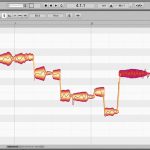 I find when you work at a Classic Hits station, a lot of projects involve dumbing down audio in order to match the audio quality of historic clips or whatever. Very often I am required to insert new audio into existing clips. Kind of like what they did in Forrest Gump. I often use Izotope Vinyl when I audio match – I just remove the vinyl clicking and popping. That and my Q10 seem to do the trick.
I find when you work at a Classic Hits station, a lot of projects involve dumbing down audio in order to match the audio quality of historic clips or whatever. Very often I am required to insert new audio into existing clips. Kind of like what they did in Forrest Gump. I often use Izotope Vinyl when I audio match – I just remove the vinyl clicking and popping. That and my Q10 seem to do the trick.
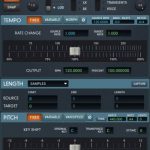 AS: Tell us about some of your new learnings? Ideas you work on? Inspirations?
AS: Tell us about some of your new learnings? Ideas you work on? Inspirations?
DW: I have a need to always keep learning. It’s easy to dwell on the 10% of ProTools that I end up using everyday to achieve my work goals, but I am aware that there is another 90% sitting there waiting to be discovered and learned.
There are so many great and talented guys and gals in this industry who are making great radio and I am inspired every time I hear their work. I want to know how they did this and that and I try to incorporate aspects of their production styles when I can.
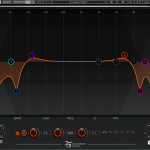 AS: Any new tools you’ve discovered lately?
AS: Any new tools you’ve discovered lately?
DW: I think the next phase of my life is going to focus on MIDI. I haven’t had the space at home to set up a keyboard and play around with sound. We’re doing some renovations to our house this year – part of that will be a true production space where I hope to be able to enhance my life with midi and create my own music beds and effects and stuff.
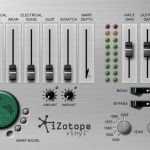 AS: Your favorite piece of imaging/production ever?
AS: Your favorite piece of imaging/production ever?
DW: I have a lot of favourites that represent different phases of my career. I really enjoyed the work I did at Newstalk 1010. I felt what I was doing there counted for something. I love current events and I really loved the immediacy of the Newstalk format. AND I loved that at no point did any of their promos feature a woman screaming “OH MY GAWWWD!” Very refreshing.
AS: What would be your career advice for a youngster or your twenty-year-old self?
DW: Don’t spend too much time imitating the work of others. Focus on creating your own style and way of creating good content.
Build relationships and a reputation with people who are working where you would like to be someday. Who you know in the industry IS a big deal and cultivating those relationships is never a waste of time.
If you start to feel stuck in your job, don’t bother waiting for management to suddenly give you that 20% pay raise, cuz brother…it will never happen.
Sometimes you just have to get out of your comfort zone and make stuff happen yourself.
Radio is an amazing industry! Stick with it.
Subscribe Now – Free!
Broadcast Dialogue has been required reading in the Canadian broadcast media for 25 years. When you subscribe, you join a community of connected professionals from media and broadcast related sectors from across the country.
The Weekly Briefing from Broadcast Dialogue is delivered exclusively to subscribers by email every Thursday. It’s your link to critical industry news, timely people moves, and excellent career advancement opportunities.
Let’s get started right now.



